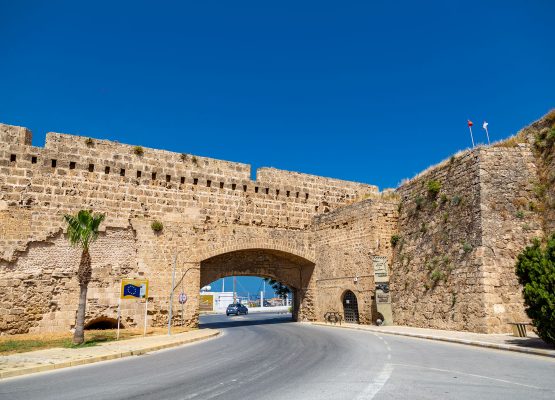
Fort of Modern Pilgrimage
This historic stronghold within the Famagusta Walls has since be renamed and houses a tomb and museum open to the public.
When the Ottoman decision was taken to conquer Cyprus, Canbulat Bey of Kilis, a provincial governor of the Empire, joined the invading forces.
As he was extremely successful during the capture of Nicosia, he was promoted to become the commander of the right wing of the Ottoman army to the south of the walled city of Famagusta, along with Iskender Pasha and Deniz Pasha.
It was from here that the Ottomans bombarded the town, and why most damage to the taller buildings within the old city walls is on the southeast side.
The Ottomans resumed large scale assaults on the walls of Famagusta and initially, they tried to dig under the overwhelming walls, however the Venetians blasted the tunnels, causing their collapse. The defending Venetians placed sharp blades on a turning wheel at the entrance of the bastion to ensure that any attack there would cut the enemy into pieces.
As the Venetians with their fortified walls and well-equipped bastions stubbornly guarded the city, the siege lasted for months on end.
Popular folklore recounts, in order to obstruct the bladed turning wheel and allow the Ottomans passage through the city entrance, Canbulat decided to ride his horse into this perplexing obstacle. In doing so, Canbulat’s head was cut off – undeterred however, he picked his head up, mounted his horse, and continued to fight for several days with his skull under his arm. This motivated the Ottoman soldiers to continue the onslaught and eventually led the Venetians to surrender.
What the Venetians called the Arsenal Bastion was renamed the Canbulat Bastion in honour of the Ottoman hero who died valiantly while attacking the walls on horseback during the bloody siege in 1572.
The martyr’s entombed remains are located at the Bastion which is also a place of pilgrimage for modern-day Turks visiting North Cyprus. Legend maintains that a fig tree grew up over the tomb, the fruits of which were believed to promote fertility in the women who visited.
The bastion also houses the ethnographic and archaeologicalCanbulat Museum, with Ottoman displays of artillery, uniforms, antique pieces, and Venetian pottery.
After the destruction of the Arsenal Bastion, the besieged city rapidly began work and rebuilt the parapets. The traces of the repairs carried out by the Ottomans after the conquest of the Arsenal and Ravelin Bastions as well as the south walls between the two can easily be seen by visitors.
The Famagusta Lighthouse also stands tall on this historic location.




